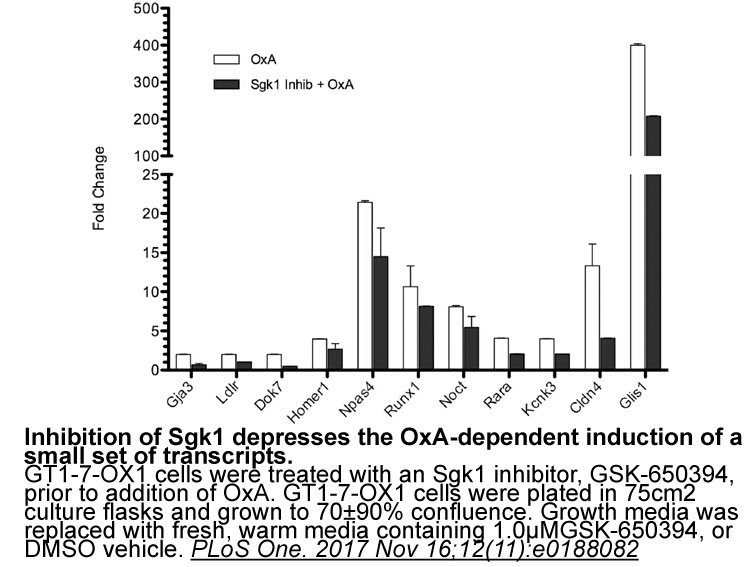Archives
br Materials and methods br Results br
Materials and methods
Results
Discussion
It has previously been reported that EZH2 plays a key role in the silencing of tumour suppressor genes through methylation of H3K27me3 in the promoter region of these genes in neuroblastoma [32], [40]. In this study, we show that EZH2 is aberrantly gained and overexpressed in neuroblastoma tumours and that patients with high EZH2 expression have a poor prognosis However, this is not independent of other prognostic factors as previously reported [41]. In agreement with its described function, we found that the EZH2-specific histone methyltransferase inhibitors GSK126 and EPZ6438 strongly downregulated H3k27me3 in EZH2 high-expressing cell lines. Interestingly, only a slight G1-arrest of the protein kinase inhibitor and a mild reduction in colony formation was observed at biological relevant compound exposure concentrations. A more explicit inhibition of colony formation only occurred at higher concentrations. This suggests that this effect is due to off-target effects of both compounds at these concentrations. However, it has recently been reported that combined inhibition of DNA methylation with a DNA demethylating agent 5-aza-2′-deoxycytidine and the EZH2 histone methyltransferase-specific inhibitor EPZ6438 re-induced the expression of tumour suppressor genes suggesting that combining DNA demethylating agents with histone methyltransferase inhibitors might be a therapeutic effective option in neuroblastoma [41].
In addition, we observed a strong apoptotic response in neuroblastoma cells on inhibition of the total EZH2 protein, which was largely independent of EZH2 methyltransferase activity. Alternative oncogenic functions of EZH2 have been described previously. First, EZH2 was shown to function as a transcriptional activator but this required an intact methyltransferase domain [24]. More recent articles have shown oncogenic functions of EZH2 independent of the methyltransferase activity [23], [25]. In Natural Killer/T-cell lymphoma, this required an intact PRC2 complex and functioned through direct transcriptional activation of CCND1 (Cyclin D1). In our study, we could show a downregulation of CCND1 after knockdown of EZH2, which suggests involvement of a similar mechanism. In SWI/SNF mutant cancers, the majority of tumours showed EZH2 dependence, which required an intact PRC2 complex but was independent of EZH2 methyltransferase activity. This resulted in insensitivity for EZH2 methyltransferase activity inhibitors. Neuroblastoma might mimic these tumour types where frequent mutations in SWI/SNF genes ARID1A and ARID1B have recently been shown to occur frequently in this tumour type [42].
Our findings of an oncogenic role of EZH2 in neuroblastoma, independent of the methyltransferase activity, highlight also the need for the development and testing of therapeutics, which specifically target the EZH2 protein as a whole [43].
Conflict of interest statement
Acknowledgements
This Research was funded by grants from Stichting Villa Joep and Kika (KiKa0189 and KiKa0132).
Introduction
Recent studies indicate that mutations in CHD8, encoding a member of chromodomain helicase DNA-binding (CHD) family of SNF2H-like ATP-dependent chromatin remodelers, manifest in and define a specific subtype of autism spectrum disorders (ASDs) (Bernier et al., 2014, Cotney et al., 2015, Sto lerman et al., 2016). ASDs are etiologically heterogeneous disorders with significant genotypic and phenotypic complexity. CHD8 represents one of the most high-risk susceptibility genes in ASD (Bernier et al., 2014, Cotney et al., 2015). Disruptive mutations in CHD8 result in a wide spectrum of congenital anomalies encompassing growth retardation and intellectual disability. Intriguingly, individuals with ASD often develop white matter abnormalities in the brain, such as deficits in myelin content and compaction (Boddaert et al., 2009, Casanova, 2006, Deoni et al., 2015, Hardan et al., 2016). These observations raise a possibility that CHD8 may be required for myelinating cell development and myelination in the CNS.
lerman et al., 2016). ASDs are etiologically heterogeneous disorders with significant genotypic and phenotypic complexity. CHD8 represents one of the most high-risk susceptibility genes in ASD (Bernier et al., 2014, Cotney et al., 2015). Disruptive mutations in CHD8 result in a wide spectrum of congenital anomalies encompassing growth retardation and intellectual disability. Intriguingly, individuals with ASD often develop white matter abnormalities in the brain, such as deficits in myelin content and compaction (Boddaert et al., 2009, Casanova, 2006, Deoni et al., 2015, Hardan et al., 2016). These observations raise a possibility that CHD8 may be required for myelinating cell development and myelination in the CNS.